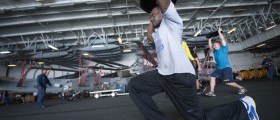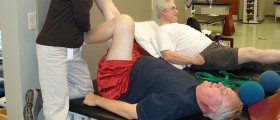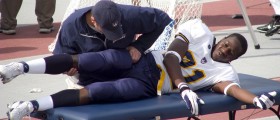
Injury to the anterior cruciate ligament is more common in females than in men. Around half of all anterior cruciate ligament injuries also result in a meniscal tear. The anterior cruciate ligament is very important with regard to stability during sporting activities that involve kicking, cutting, and running. With regard to surgery for this type of injury, the success rate of anterior cruciate ligament reconstruction operations is somewhere between seventy and ninety-five per cent in the United States.
The anterior cruciate ligament
The anterior cruciate ligament is made up of densely organized tissue, which is mainly fibrous and collagenous in nature. The ligament attaches the femur to the tibia and is comprised of two groups, the anteromedial and posterolateral bands. The anterior cruciate ligament is attached to bone through fibrocartilage and mineralized cartilage. With regard to the attachment to the femur, the anterior cruciate ligament is also attached to a fossa. This fossa is located on the posteromedial edge of the lateral femoral condyle. The corresponding tibial insertion is located in a fossa that is anterior and lateral to the anterior tibial spine.
A primary function of the anterior cruciate ligament means that it receives nerve fibers from the posterior branch of the posterior tibial nerve. The reason for this is it allows for the functioning of proprioception. This allows for postural changes to occur during motion and ligament deformation.
Treatment
Treatment of this type of injury should vary depending on factors involving the patient, particularly with regard to their level of activity prior to the occurrence of the injury. For this reason, levels of activity have been proposed as guidelines. Level I activity involves pivoting, cutting and jumping. Level II includes manual work or side-to-side sports. The next level includes light manual work and non-cutting sports. Level IV applies to those who are sedentary and do not partake in any sport. For those who fall into the category of Level III or IV, it is unlikely that surgical treatment will be advised. The other levels will often require surgery, however. Young athletes should be properly evaluated before surgery is recommended, in order to avoid complications.
The anterior cruciate ligament acts as a restraint in order to limit the anterior movement of the tibia. The peak of restraint exerted by the anterior cruciate ligament occurs during the full extension phase of movement. There is little bony stability between the femur and tibia, and thus the ligament must provide the stability.

















Your thoughts on this
Loading...